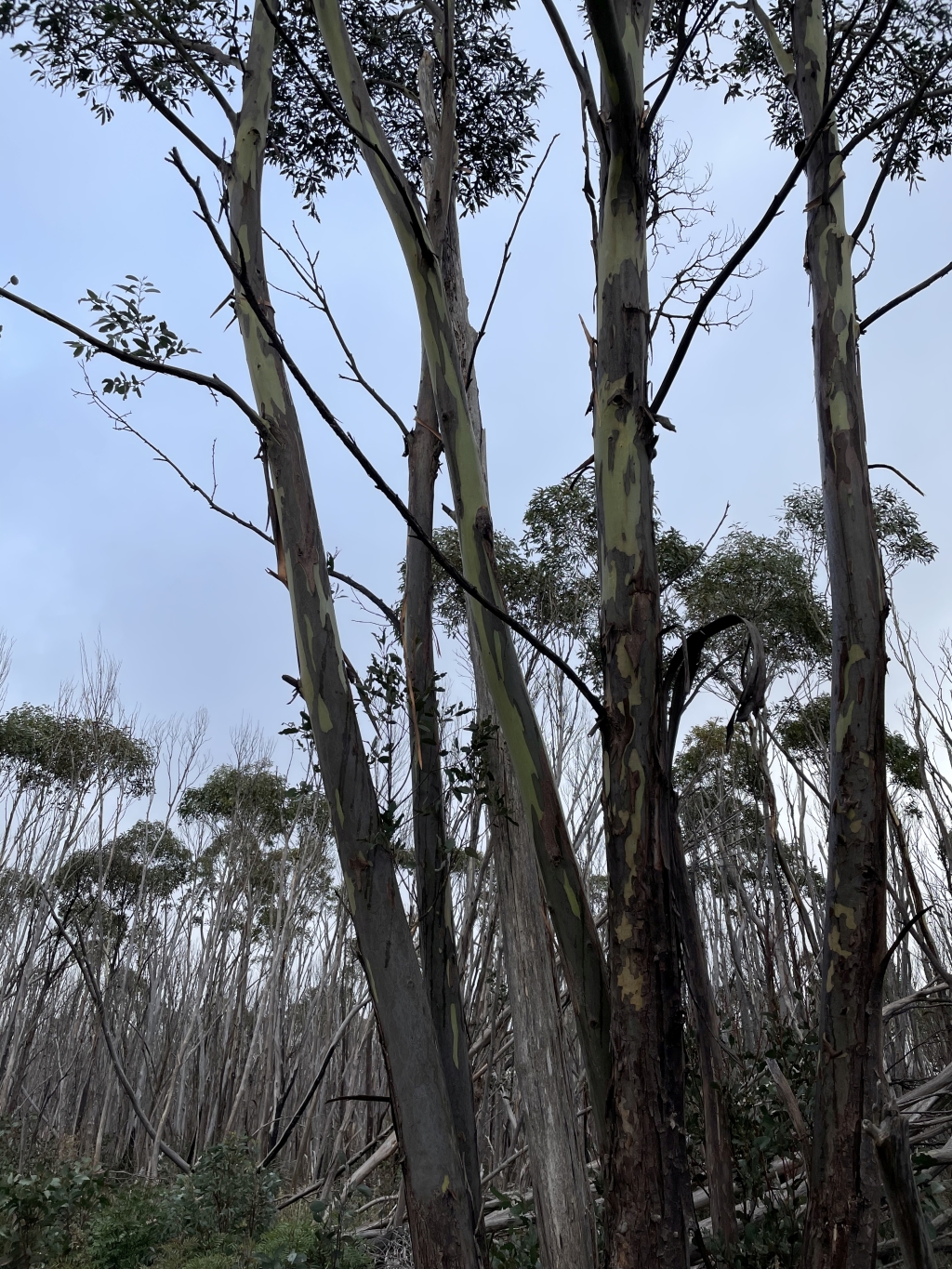Eucalyptus elaeophloia
ChappillMallee or tree to 12 m tall; bark mostly smooth but with partly shed slabs, red-brown and grey over greenish to coppery-orange. Juvenile leaves sessile, opposite for many pairs, orbicular, then alternate, elliptic to ovate, to 4 cm long, 3 cm wide, dull, green to blue-green, slightly glaucous at least on growing tips; adult leaves with flattened petioles, alternate, lanceolate, to 11.5 cm long, 2.5 cm wide, concolorous, glossy, green; reticulation dense, with sparse, small, island oil glands. Inflorescences axillary, unbranched: peduncles stout, to 0.4 cm long, 3-flowered; buds more or less sessile, ellipsoid, 0.7 cm long, 0.3 cm diam., scar present; operculum conical; stamens inflexed; anthers dorsifixed, cuneate; ovules in 4 vertical rows; flowers white. Fruit sessile, hemispherical, to 0.5 cm long, 0.9 cm diam.; disc ascending; valves 3, exserted; seed dark brown, flattened-ellipsoid, lacunose, hilum ventral. Flowers Mar., but imperfectly known.
VAlp. Known only from high altitudes on the Nunniong Plateau (e.g. Brumby Point). A record from the Cobberas requires field verification.
Distinguished from co-occurring and associated species Eucalyptus perriniana by the non-connate juvenile leaves, from E. glaucescens by its non-glaucous buds and adult leaves, and from E. dalrympleana by its greenish bark and small, sessile buds. It is closely related to E. imlayensis, a sparsely-crowned, slender tree or mallee of restricted occurrence on Mt Imlay, New South Wales.
Brooker, M.I.H.; Slee, A.V. (1996). Eucalyptus. In: Walsh, N.G.; Entwisle, T.J., Flora of Victoria Vol. 3, Dicotyledons Winteraceae to Myrtaceae, pp. 946–1009. Inkata Press, Melbourne.
 Spinning
Spinning
